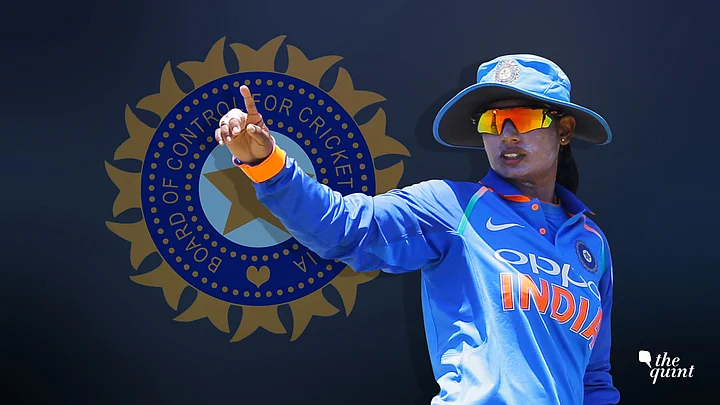Can you imagine the Indian men’s team embroiled in an ungainly mudslinging match between a coach and a player in the immediate aftermath of a big-ticket tournament?
Can you picture the Men in Blue reduced to a ‘he-said-she-said’ battle between major cogs of the wheel?
Or washing their dirty linen in public over a captain’s call pertaining to a senior player?
Okay, we’ve seen all of that.
But in two of those three cases, Team India was coming out of some of its low ebbs. Kohli-vs-Kumble only erupted to shattering proportions after a crushing defeat to Pakistan in a major final. The trough of the Greg Chappell era was hit with the debacle of the 2007 World Cup.
The Indian women’s cricket team, however, was at its highest peak, seemingly.
The narrative was very different 16 months ago, when they were making their way to a first World Cup final in 12 years at Lord’s. It was very different a week ago, as they stormed into a WT20 semi-final for the first time since 2010, with wins over the No. 1 and then-No. 2 ranked teams at that.
But a week, as we’ve found out, can be a very long time.
Mithali Raj felt “deflated, depressed and let down” – and she had her reasons to. Coach Ramesh Powar was “shell-shocked” to find she had “packed her bags to leave with announcement of retirement in the morning” in the middle of the tournament.
But why are these details known to the country now?
What happened to the ‘sanctity of the dressing room’, and the notion that ‘what happens in the dressing room, stays in the dressing room’ – elements driven home with so much fervour when Virat Kohli and Anil Kumble had stopped looking each other in the eye?
Didn’t the ‘sanctity’ evaporate when Raj’s e-mail, meant to land only in the inboxes of BCCI CEO Rahul Johri and GM Saba Karim, was leaked to the world?
If the CoA, by the admission of Diana Edulji herself, did not want to “go into cricket issues,” what was the need to publicise its meetings with all parties, over exactly the same issues? What was the pressing need for a meeting on “cricket issues” in the first place? Why is Vinod Rai – so often quick with his pronouncements – mum until now?
Why different strokes for different folks?
It feels a little defeatist towards an equalitarian argument to have to draw parallels with their male counterparts, but is there really any other yardstick in the minds of those who run Indian cricket?
Let’s get hypothetical again. It’s very plausible to imagine Virat Kohli, or other senior members of the men’s team, would have written mails or sent texts to people in the administration over some issue at some point of time. Have you heard of any leaks? Can you begin to imagine the uproar from an Indian (men’s) team already so all-guards-up in its approach to the media?
A ‘humiliated’ Mithali. A ‘manipulative’ Harmanpreet. A ‘shell-shocked’ Powar. These are India’s takeaways from their best-ever campaign at the World T20. But what about run-machine Smriti? Or batter-bamboozling Poonam? Or rising prodigy Jemimah?
The trio involved in the mess that has crippled the Women in Blue – Kaur, Raj and Powar – have all taken decisions they may come to regret.
Kaur’s tactical faux pas. Raj’s trust in the office she addressed her mail to. Powar’s spilling of dressing room beans (or his report, again to BCCI, being accessed by media outlets).
The greatest cricketer in Indian women’s history isn’t the one most let down. With all due respect, sorry, Ms Raj – the anguish rests with the 15-woman team (16, by including injury withdrawal Pooja Vastrakar) that played its hearts out in the Caribbean. Some of them had earlier played their hearts out in England last year too.
Who’s going to recall Smriti Mandhana pulverising No. 1 and eventual-champions Australia to ensure India topped their group? Who will remember Jemimah Rodrigues becoming the youngest half-centurion ever at the Women’s WT20? Does Harmanpreet Kaur’s sensational century in the tournament opener against New Zealand – the first by an Indian in women’s T20Is – not merit at least as much recall value as her decision to drop her senior colleague later on? Or your own twin half-centuries, which ensured you became India’s leading run-getter in the format – female or male?
Their efforts, their gumption. Your efforts and your gumption (of two decades, and not just two weeks/years). It all lies forgotten.
We’ve let our rising stock down, Indian cricket. We have failed our women.
(At The Quint, we question everything. Play an active role in shaping our journalism by becoming a member today.)
